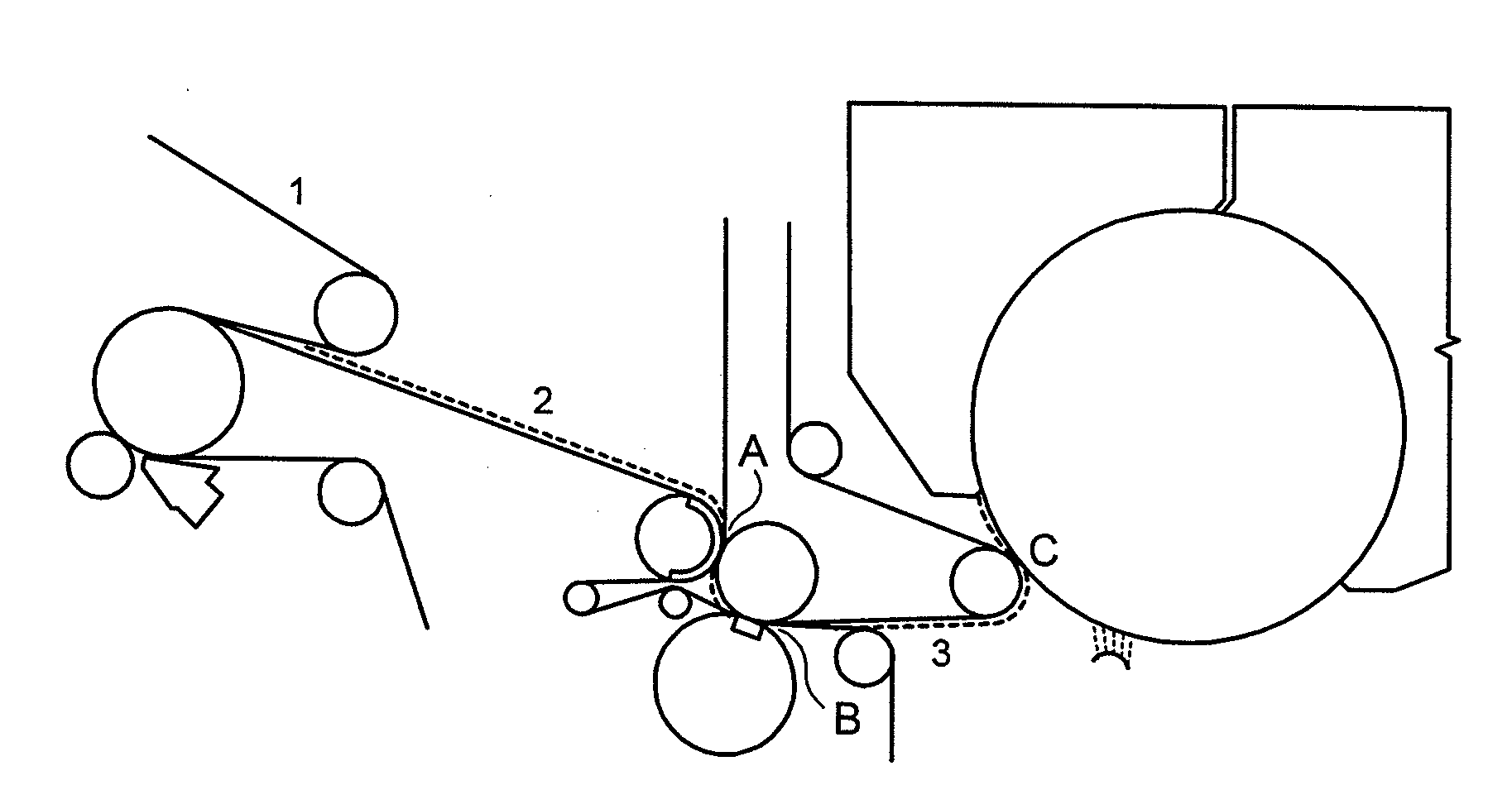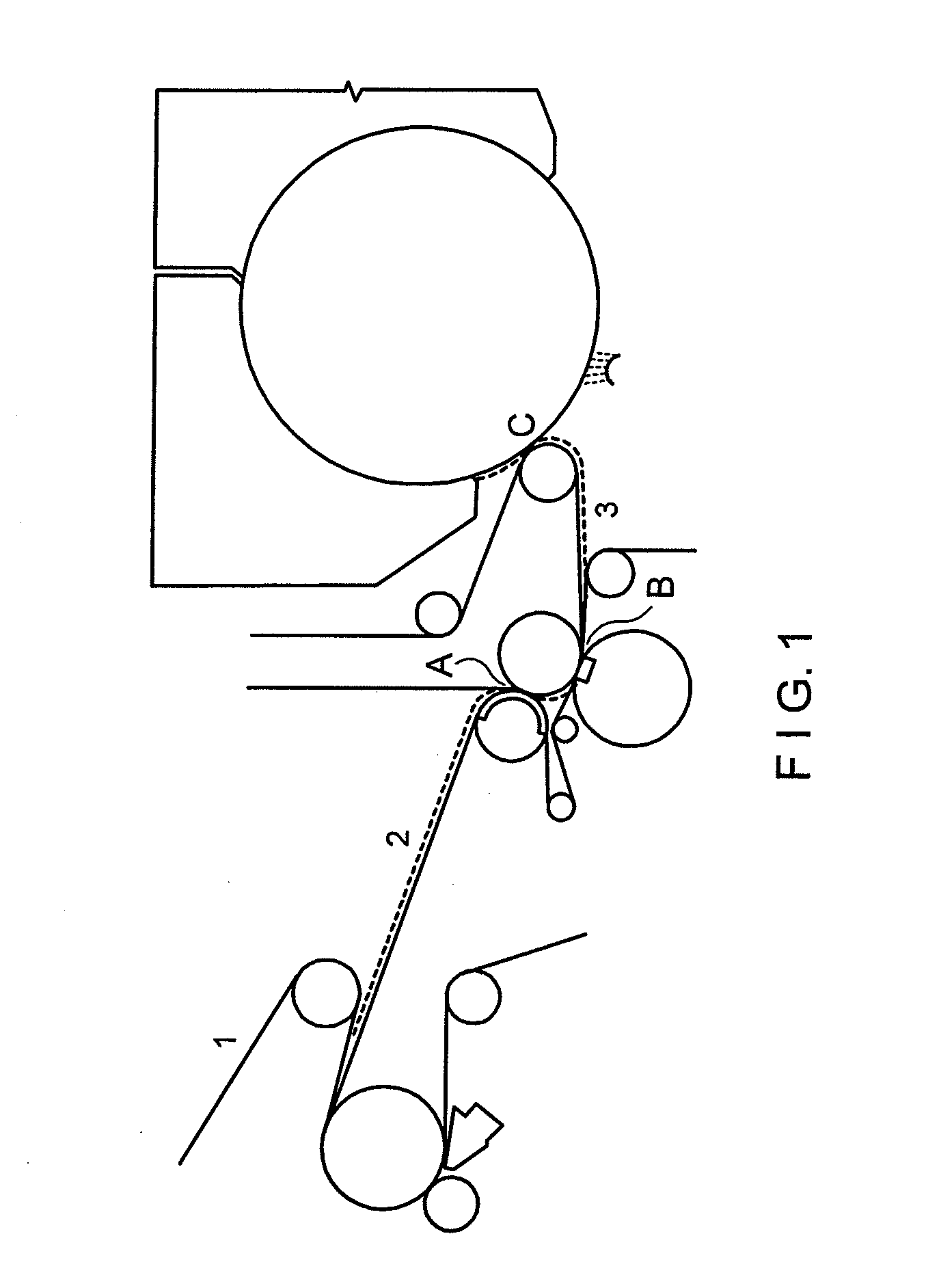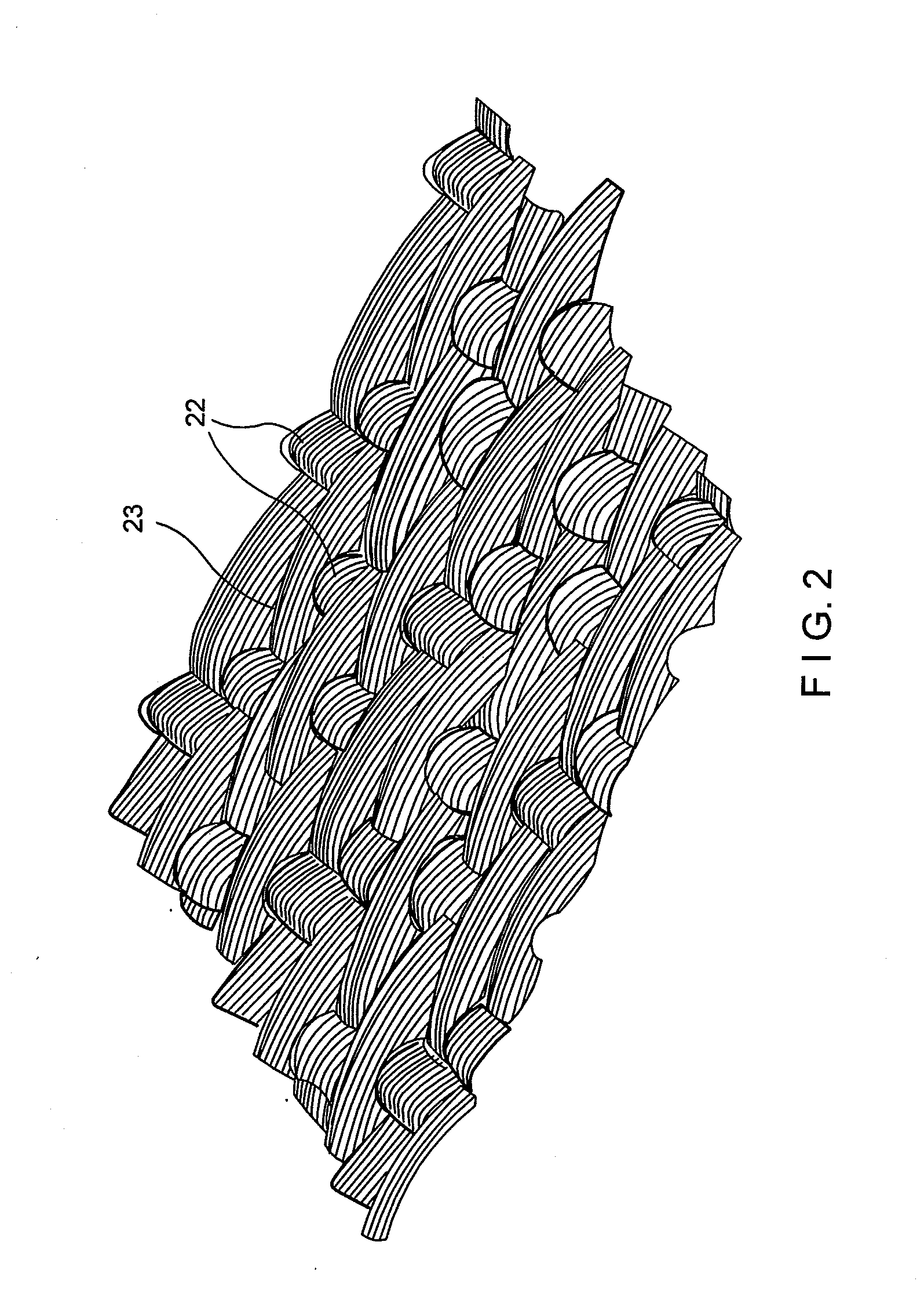Permeable Belt for the Manufacture of Tissue, Towel and Nonwovens
a technology of permeable belts and nonwovens, applied in the field of endless structures, can solve the problems of high absorbency, high cost and complexity, soft and bulky towels, etc., and achieve the effect of enhancing dewatering
- Summary
- Abstract
- Description
- Claims
- Application Information
AI Technical Summary
Benefits of technology
Problems solved by technology
Method used
Image
Examples
Embodiment Construction
[0037]The invention will now be described more fully hereinafter with reference to the accompanying drawings, in which exemplary embodiments of the invention are shown. This invention may, however, be embodied in many different forms and should not be construed as limited to the illustrated embodiments set forth herein. Rather, these illustrated embodiments are provided so that this disclosure will be thorough and complete, and will convey the scope of the invention to those skilled in the art.
[0038]While the scope of the application discusses the use of the belt or sleeve structure in the production of both nonwovens and tissue or towel, most of the discussion will be concerning tissue / towel.
[0039]While the term fabric and fabric structure is used, fabric, belt, conveyor, and fabric structure are used interchangeably to describe the structure described herein.
[0040]FIG. 1 is a diagram of a machine that can be used to produce tissue or towel, showing three fabrics: a forming fabric ...
PUM
| Property | Measurement | Unit |
|---|---|---|
| effective diameter | aaaaa | aaaaa |
| effective diameter | aaaaa | aaaaa |
| areas | aaaaa | aaaaa |
Abstract
Description
Claims
Application Information
 Login to View More
Login to View More - R&D
- Intellectual Property
- Life Sciences
- Materials
- Tech Scout
- Unparalleled Data Quality
- Higher Quality Content
- 60% Fewer Hallucinations
Browse by: Latest US Patents, China's latest patents, Technical Efficacy Thesaurus, Application Domain, Technology Topic, Popular Technical Reports.
© 2025 PatSnap. All rights reserved.Legal|Privacy policy|Modern Slavery Act Transparency Statement|Sitemap|About US| Contact US: help@patsnap.com



